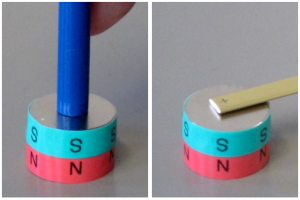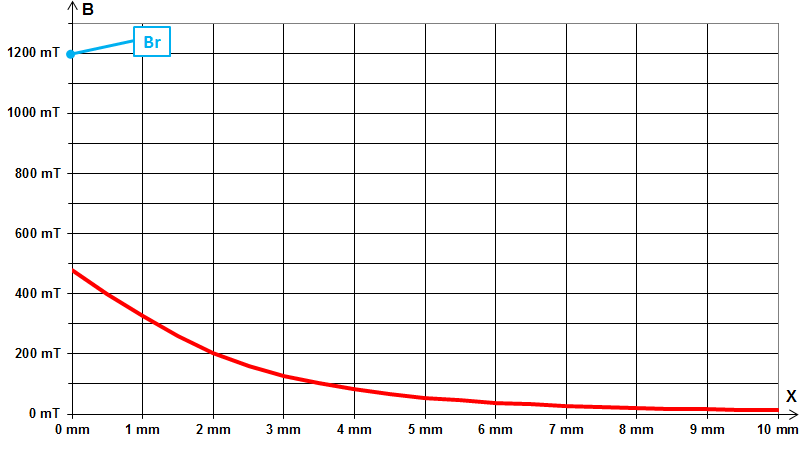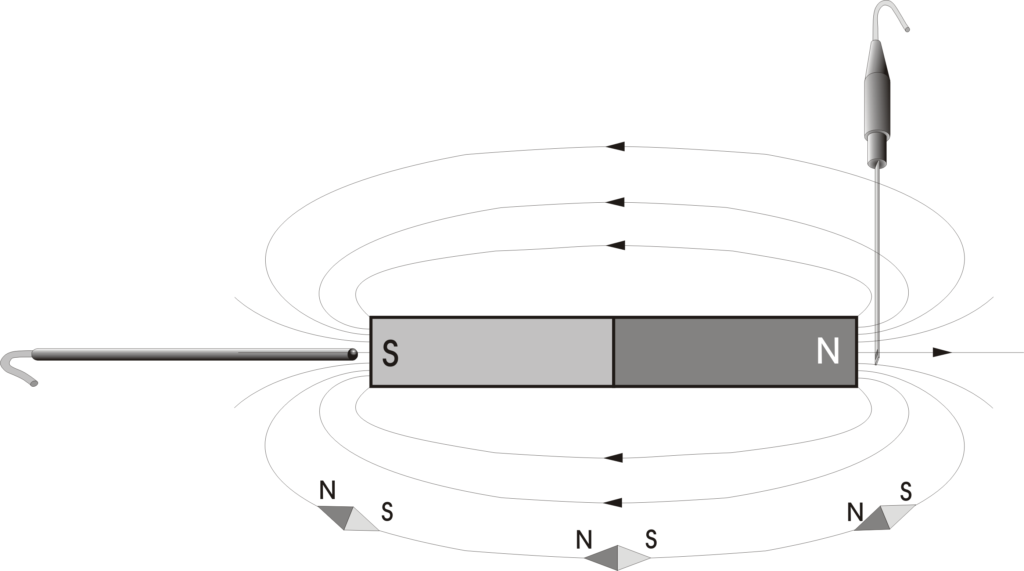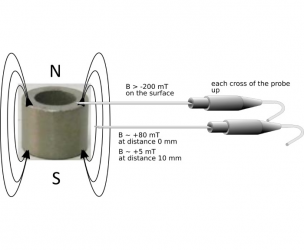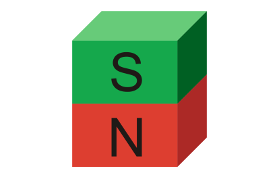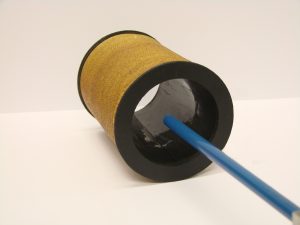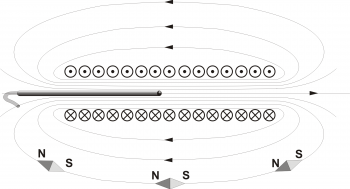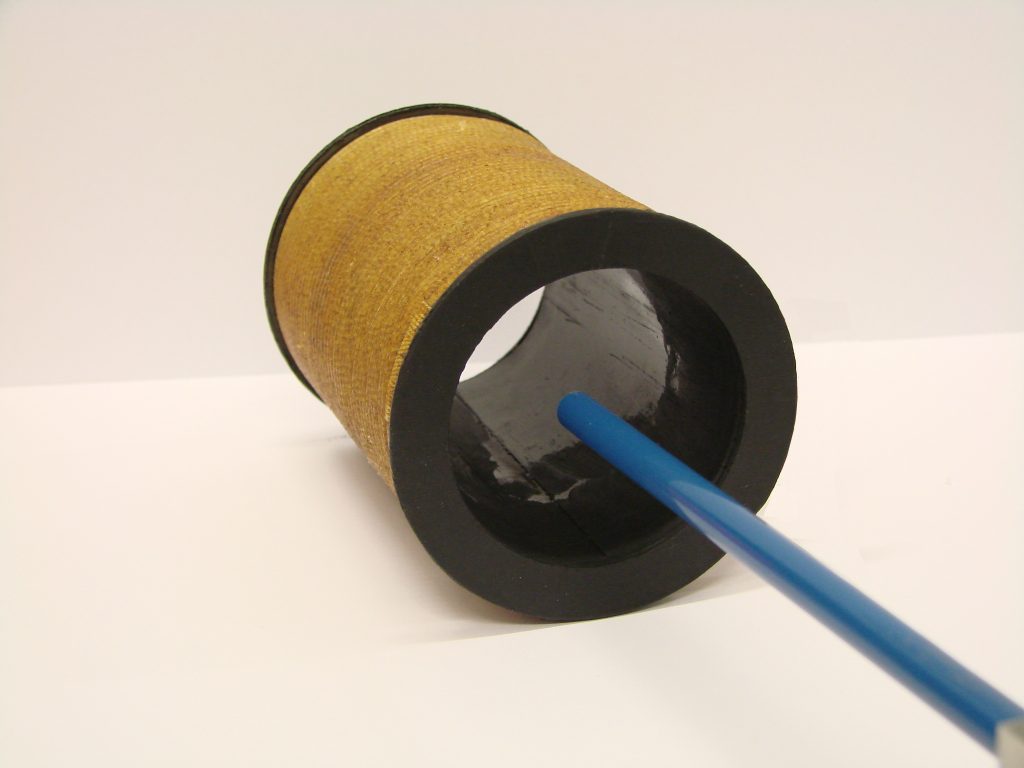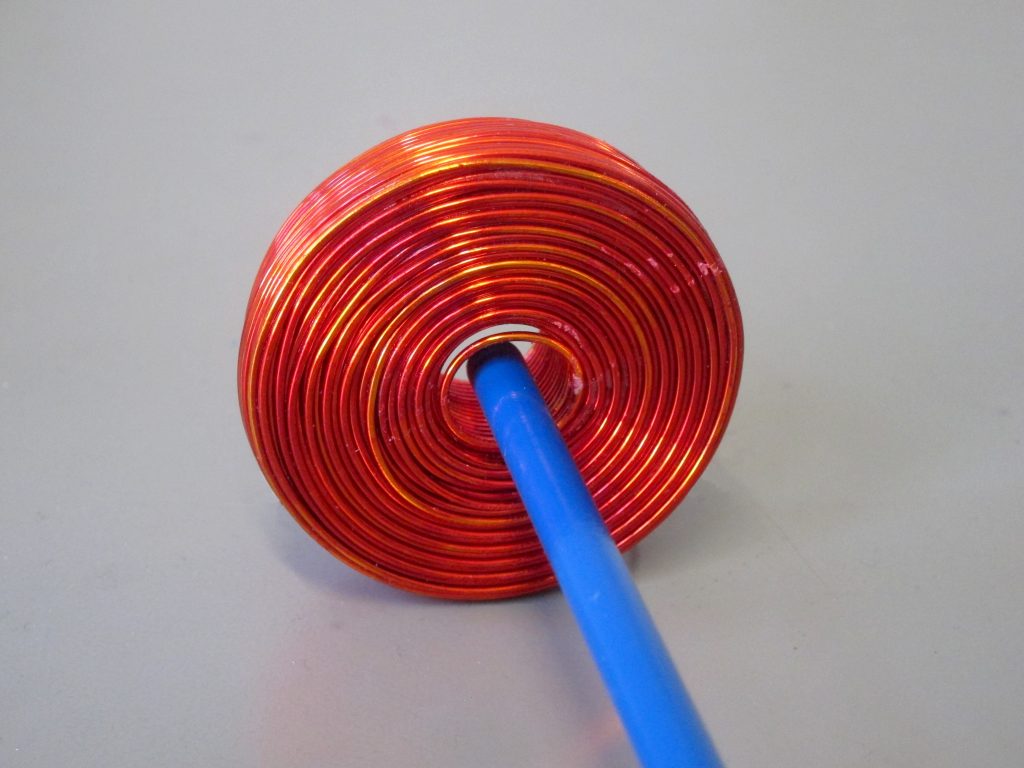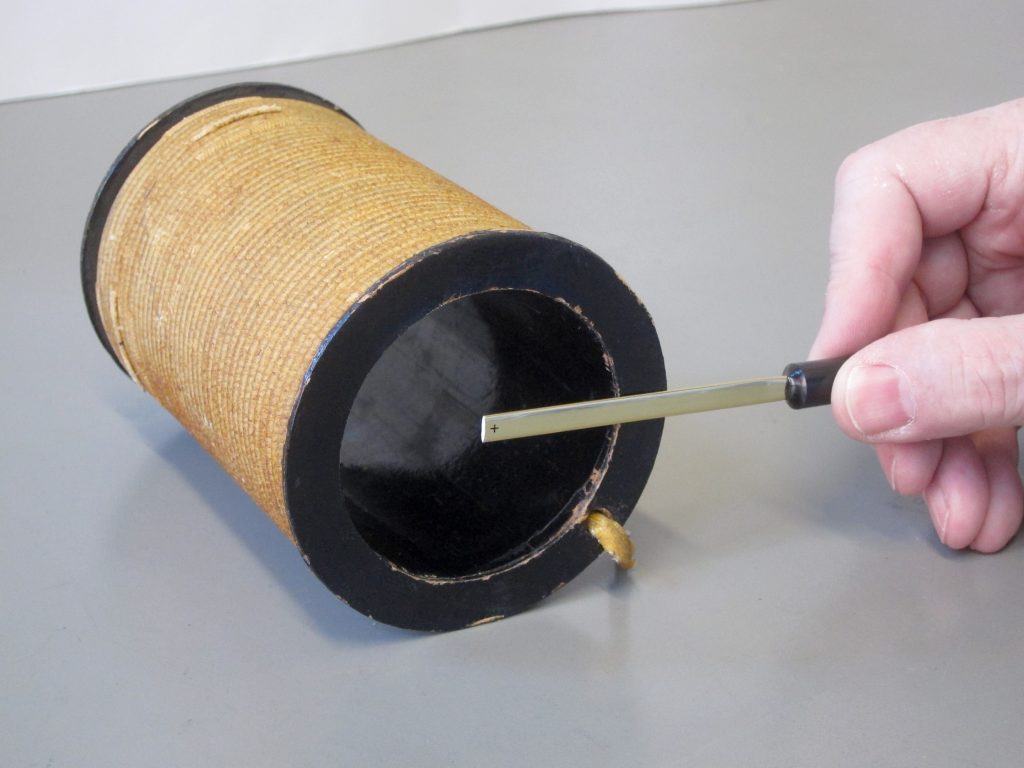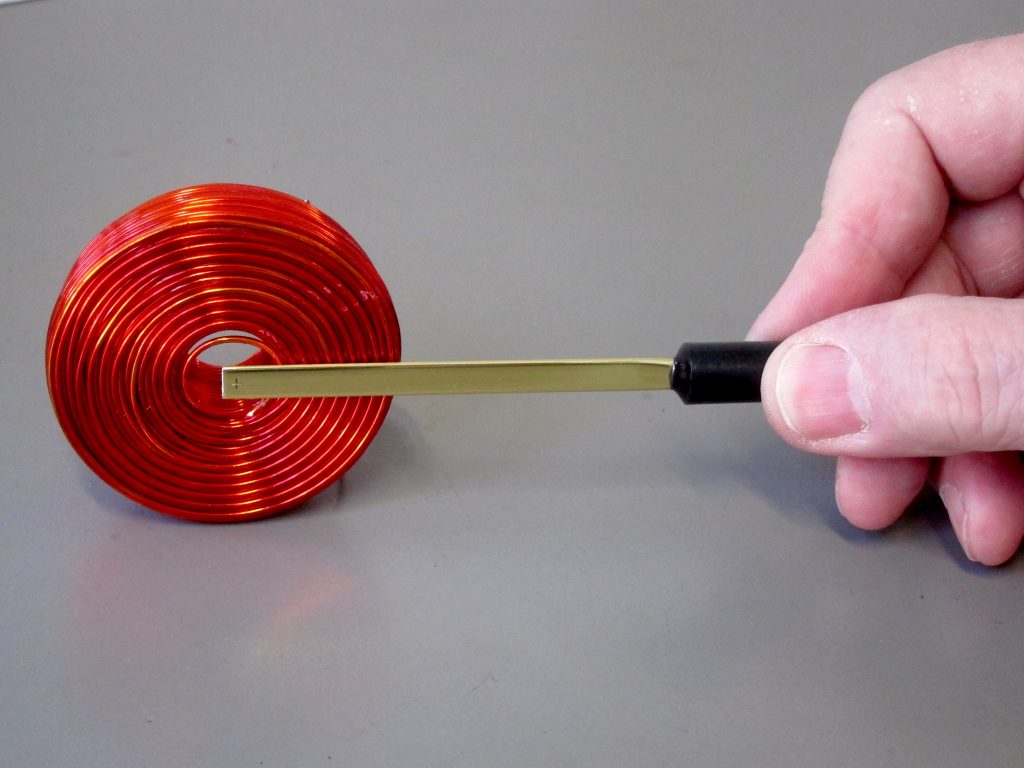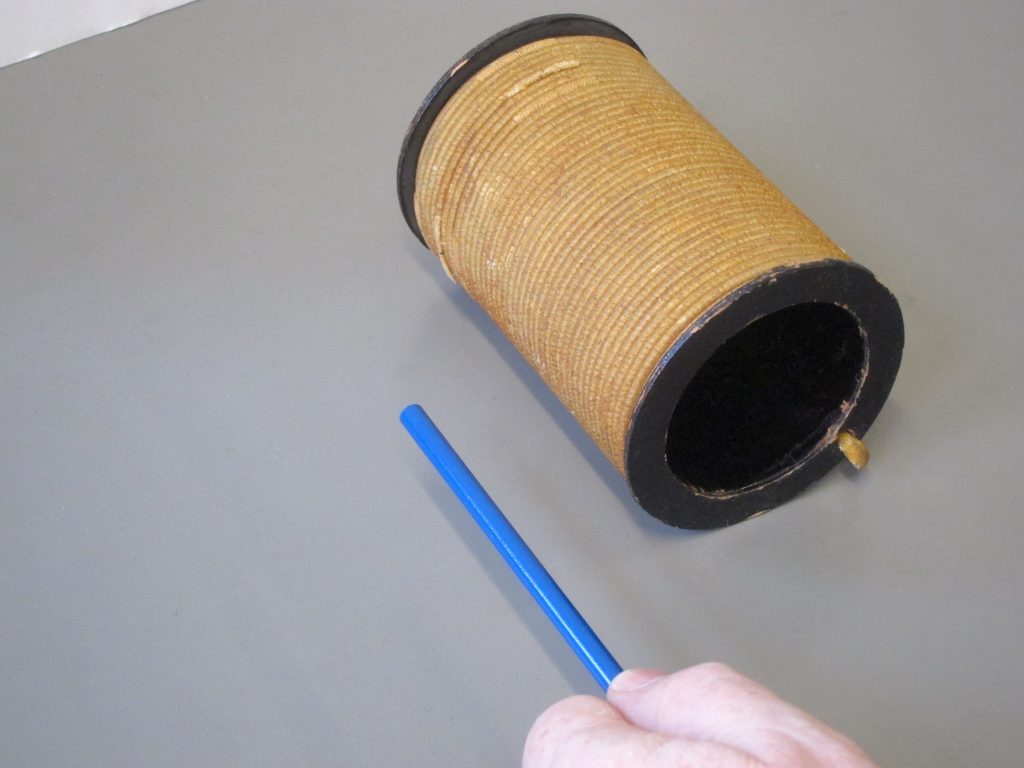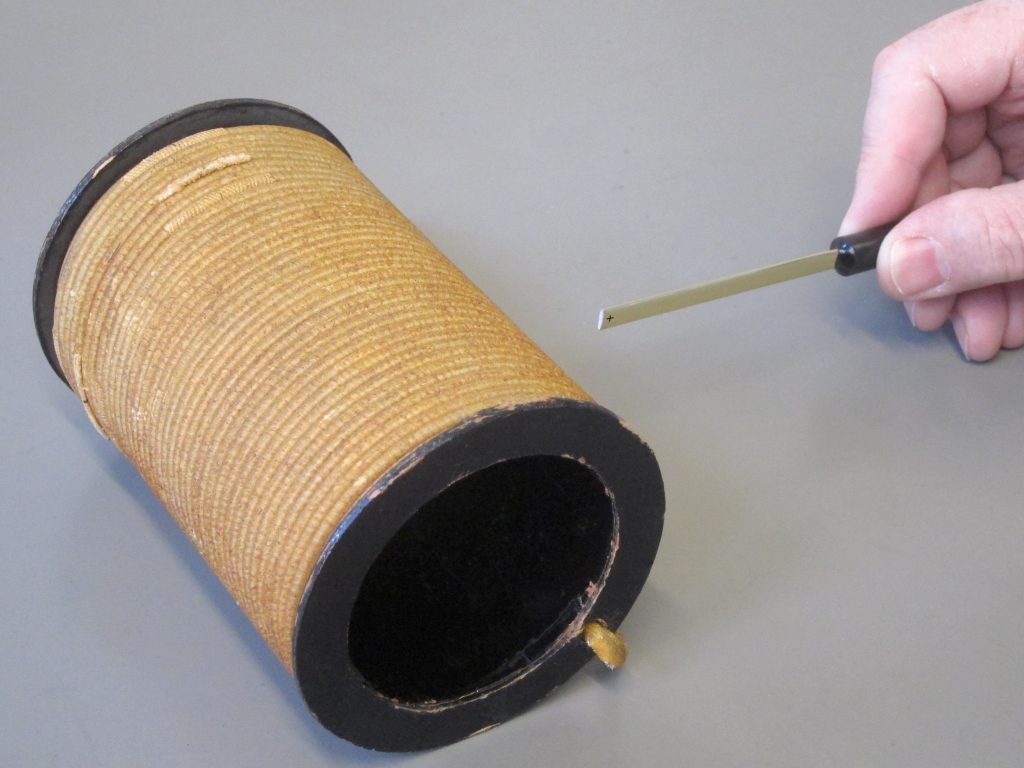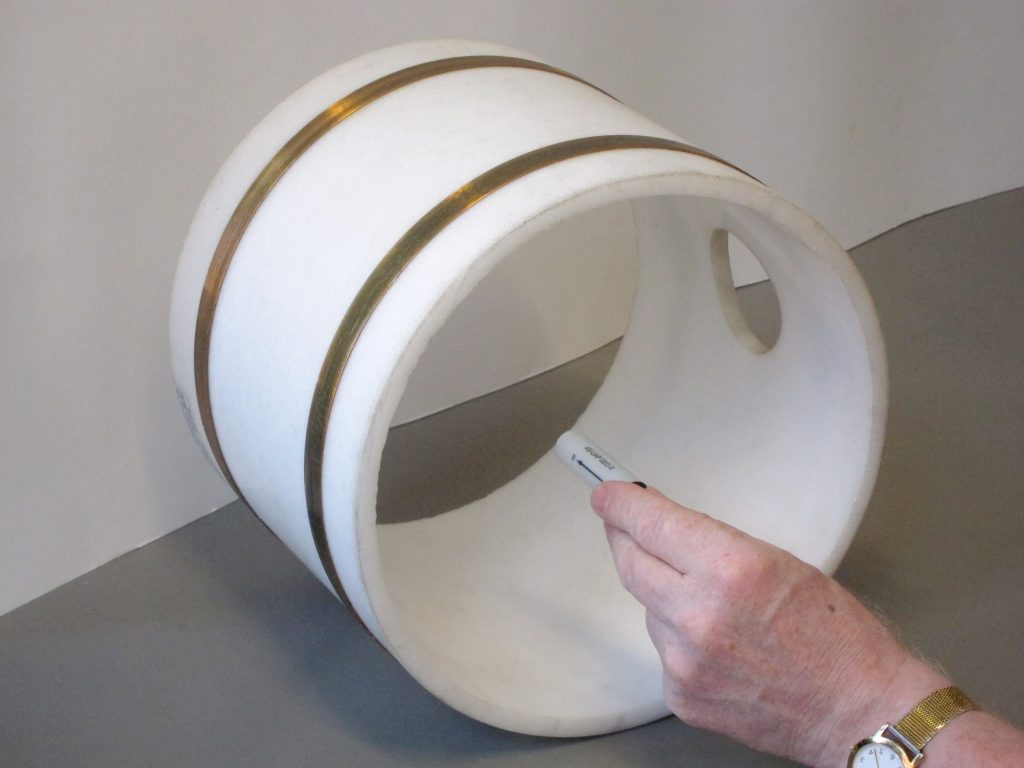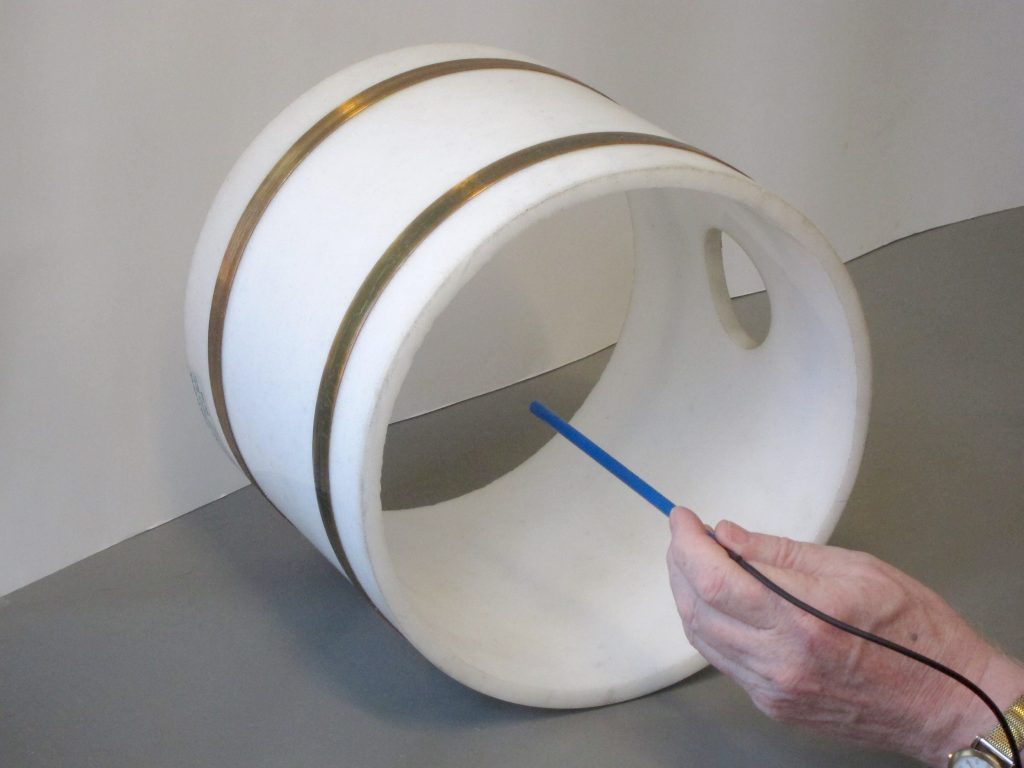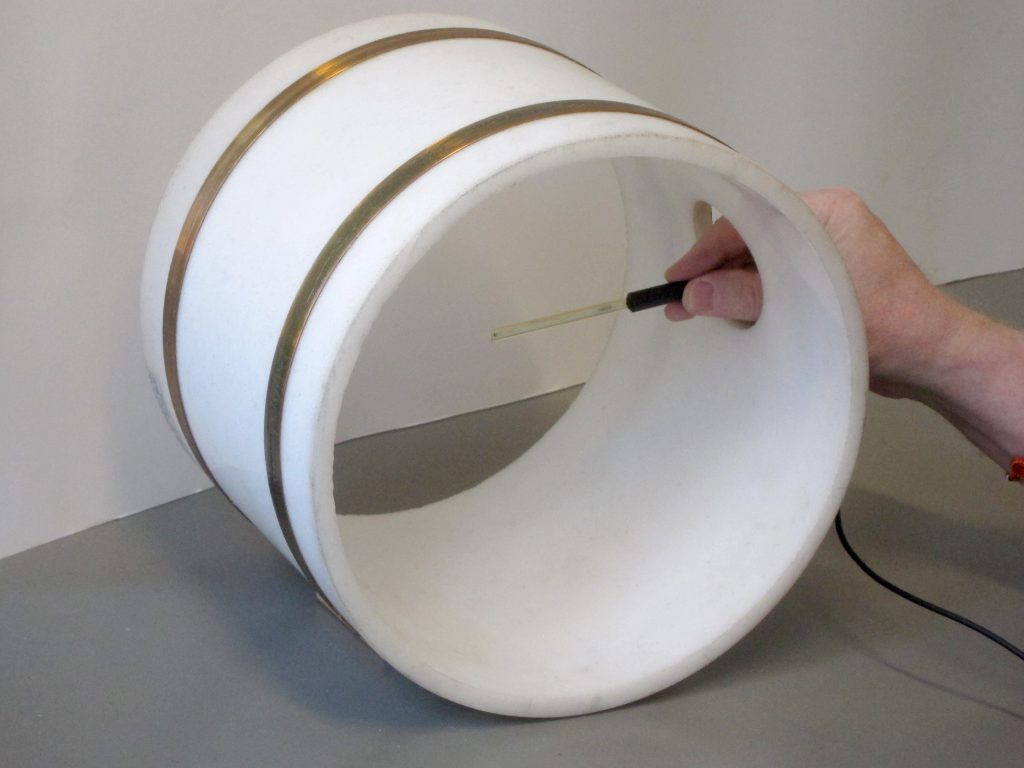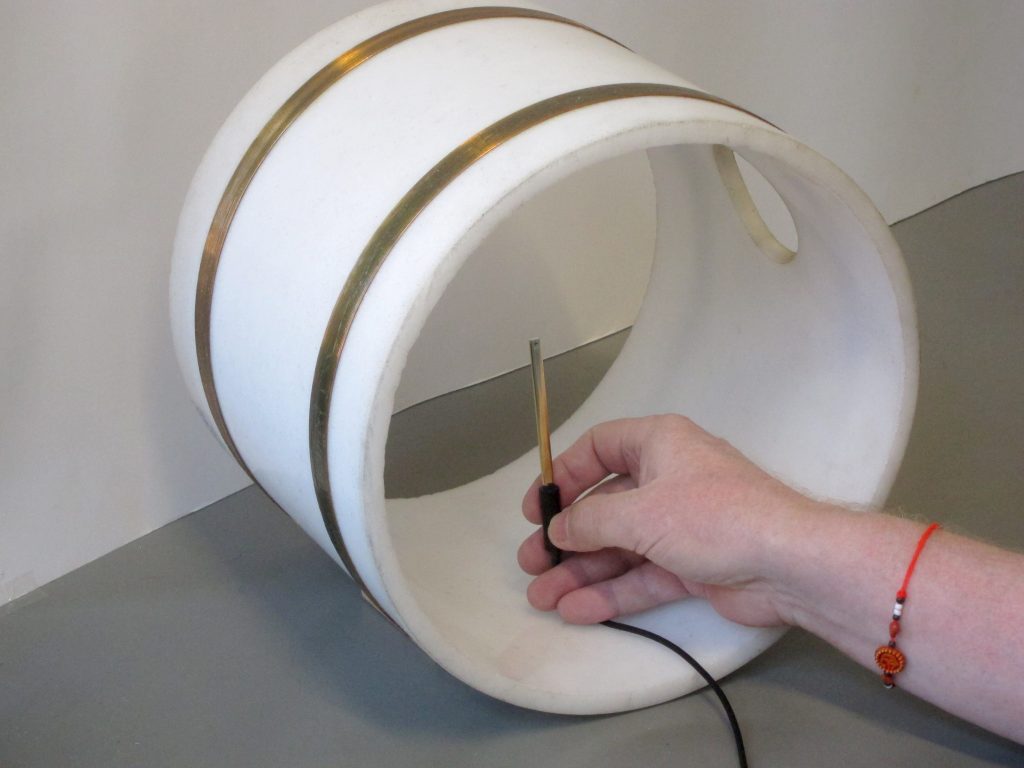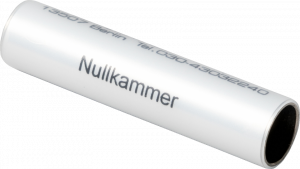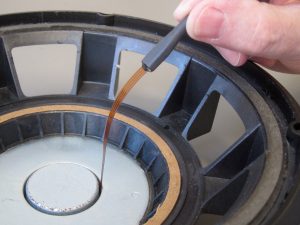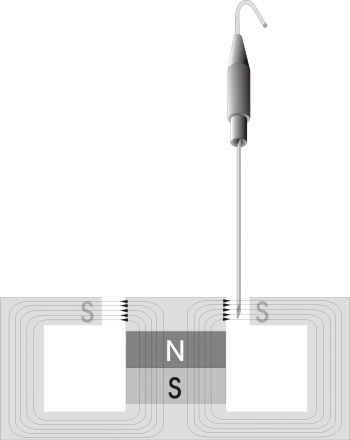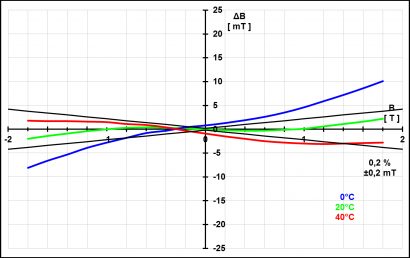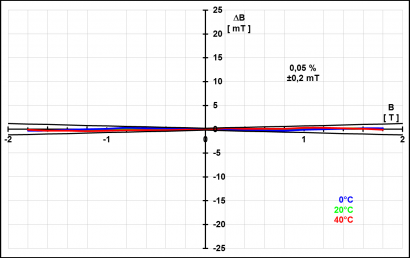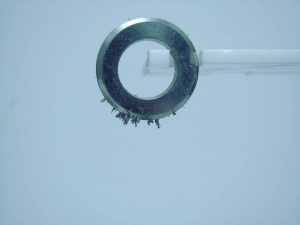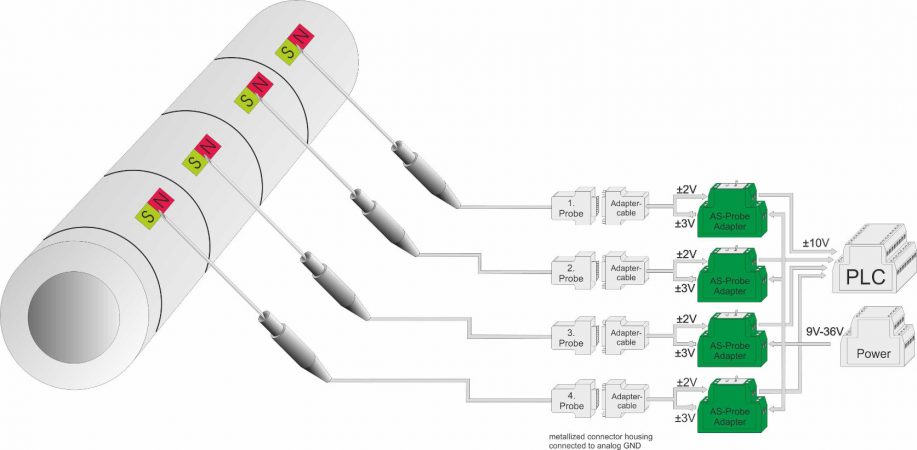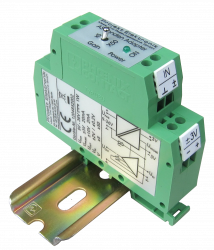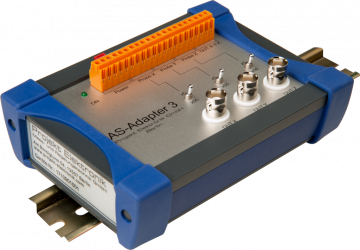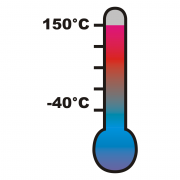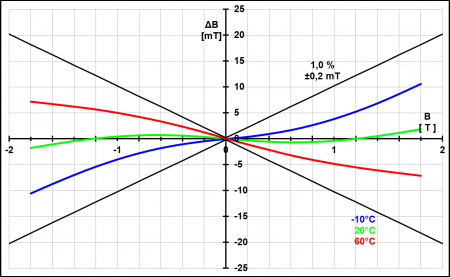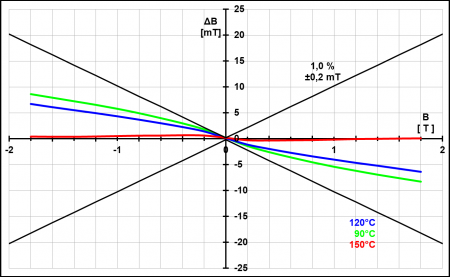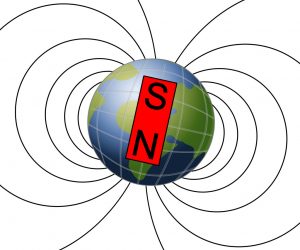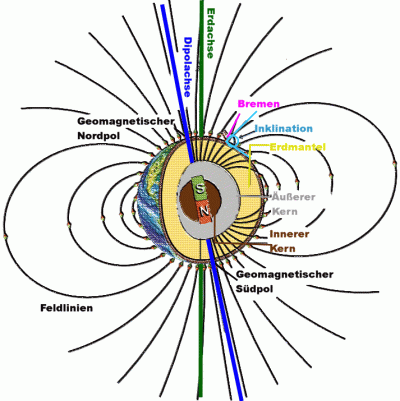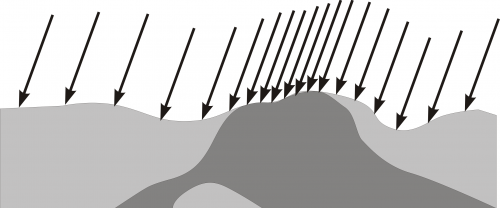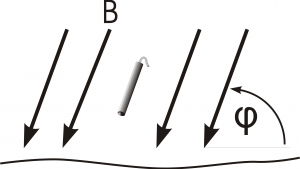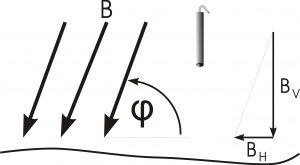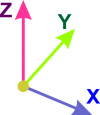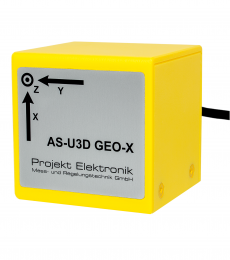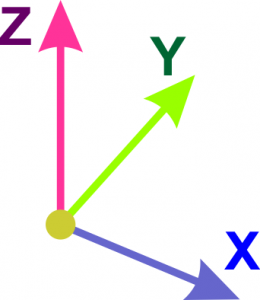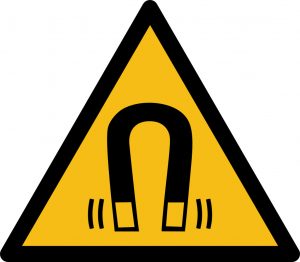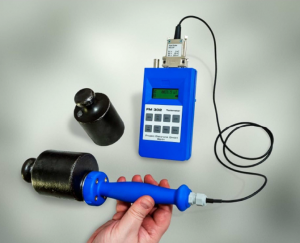FAQ: Measurement Technology For Magnetic Fields Explained
Measurement of Magnetic Fields
Start » FAQ: Measurement Technology For Magnetic Fields Explained
Frequently Asked Questions About Measuring Magnetic Fields
Measurement of the Flux Density of Permanent Magnets
Magnet manufacturers often only specify the remanence BR of the magnet (typically approx. 1200 mT for neodymium magnets). The value of the flux density at the surface is in principle far below this value.
Only the flux density on the surface or at a certain distance from the surface of the magnet can be measured. This depends, among other things, on the shape of the magnet and the spatial arrangement of the probe and magnet (measurement in the middle or at the edge, measurement over a surface or edge).
With increasing distance from the surface, the flux density decreases sharply.
For reproducible flux density measurements, the distance between the probe and the magnet must therefore be reproducible (as constant as possible). The positioning of the probe in relation to the magnet must also be chosen to be the same in each case.
Since fractions of a millimeter have a decisive influence on the measured value, special measuring devices are recommended, or the probe should be placed directly on the magnet.
Whether a transverse or an axial probe is used for the measurement depends on the spatial conditions. The transverse probe is placed flat for the measurement, the axial probe is placed perpendicular to the surface for the measurement.
For small magnets (less than 5 mm in diameter) and magnetic foils with magnetization strips that are close together (distance less than 3 mm), a probe with a small active area should be selected. Magnetic field probes with active areas of less than 0.2 mm² are advantageous.
In addition to the measuring distance, the temperature dependence of the magnet (typically 0.2%/°C) and probe (typically 0.03%/°C) should also be taken into account.
Application Example and Application Notes
A ring magnet is shown in the adjacent graphic as an application example. It can be clearly seen that the flux density B depends on the position and the distance between the transverse probe and the ring magnet.
Further details are contained in the following application notes.
Flux Density Of A Magnet In Distance X
Magnetization types of permanent magnets
Measurement of magnetic fields
Device Recommendation
The Teslameter FM 302 with the magnetic field probe AS-NTM or AS-NAP is suitable from our range of magnetic field measuring devices. Due to the brass profile, the transverse AS-NTM is more robust than the axial AS-NAP. Therefore we recommend the AS-NTM for daily use. Ultimately, the accessibility of the parts to be measured also plays a role in the choice.
The measuring range of the probes is ±2000 mT. It is therefore sufficient even for strong neodymium magnets. With weak magnets, the Teslameter FM 302 can be switched to the next smaller measuring ranges ±200 mT (x10) and ±20 mT (x100).
If only weak magnets are to be measured, the more sensitive magnetic field probes AS-LTM and AS-LAP can also be used. These have a maximum measuring range of ±200 mT.
The distance between the active area and the surface of the probe is less than 1.0 mm for the AS-NTM and AS-NAP. You will find precise information in the data sheet of the probes.
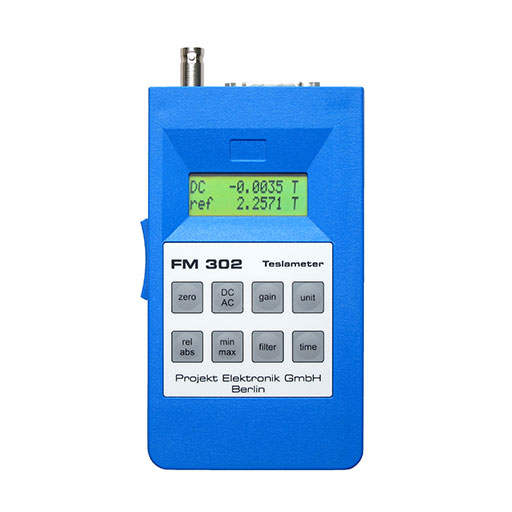


Determining the Polarity of Permanent Magnets
Permanent magnets or permanent magnets have a static magnetic field. In addition to the strength of the magnets, the polarity must also be checked using measurements. The aim is to determine whether it is a North Pole or a South Pole.
The magnets can be magnetized in many different ways. See our Application Note PE009 Types of magnetization of permanent magnets.
The direction of the measured field in relation to the measuring direction of the probe is indicated by the sign of the measured value. The polarity is then determined from the combination of the sign of the displayed value and the orientation of the measuring probe.
The graphics below show the field direction for a positive reading. With the transversal probes, the field lines must enter through the engraved cross or the white ceramic surface.
If a transversal probe is placed cross-up on a magnet or if the axial probe is placed vertically on a magnet and the teslameter shows a positive value, then there is a south pole under the probe. If a negative value is displayed, it is a north pole.
Device Recommendation
The Teslameter FM 302 with the magnetic field probe AS-NTM or AS-NAP is suitable from our range of magnetic field measuring devices. Due to the brass profile, the transverse AS-NTM is more robust than the axial AS-NAP. Therefore we recommend the AS-NTM for daily use. Ultimately, the accessibility of the parts to be measured also plays a role in the choice.
The measuring range of the probes is ±2000 mT. It is therefore sufficient even for strong neodymium magnets. With weak magnets, the Teslameter FM 302 can be switched to the next smaller measuring range ±200 mT (x10) or ±20 mT (x100).
If only weak magnets are to be measured, the more sensitive magnetic field probes AS-LTM and AS-LAP can also be used. These have a maximum measuring range of ±200 mT.
How do you Measure the Flux Density inside an Air Coil (e.g. a Cylinder Coil)?
Magnetic Fields with Coils
Magnetic fields of a few millitesla can be generated with air coils. Two-digit millitesla values can usually only be generated for a short time or with water-cooled coils.
Types of Air Coils
The simplest form of air coil is the cylindrical coil. It is also called a solenoid.
A Helmholtz coil consists of two flat coils that are connected together. They create a larger homogeneous field area. However, the achievable magnetic flux density is usually a few hundred microtesla.
With a transversal probe, on the other hand, only the exit flux density of a coil can be measured.
On the other hand, both types of probes can be used to measure the stray field. Alignment takes place according to the measuring direction of the probe type.
For small Helmholtz coils that can only generate a weak field, measurement with the sensitive AS-UAP GEO-X probe is a good idea. The axial probe AS-LAP can be used for stronger coils
Since the interior space between the two coils is accessible from the side, a transversal probe can also be used to measure. In addition, if the coil diameter is large enough, it is also possible to place the probe inside the coil.
Device Recommendation
From our range of magnetic field measuring devices, the Teslameter FM 302 with the AS active probe AS-LAP or AS-UAP GEO-X is suitable.
The measuring range of the AS-LAP probe is ±200 mT. With the Teslameter FM 302 in x100, the measuring range for the AS-LAP is still ±2 mT. This allows medium and small fields to be resolved well.
The AS-UAP GEO-X probe is specially designed for measuring very small fields such as the earth’s magnetic field. The measuring range of the probes is ±200 µT. Due to the possibility of compensating for the influence of the earth’s magnetic field, a resolution of one nanotesla (0.001 µT) or less is achieved in the smallest measuring range (Teslameter FM 302 in x100).
We can also produce variants of very thin axial probes as customer-specific production. The optional zero chamber is recommended for the AS-LAP probe. In particular, if very small fields are to be measured, the zero point of the probe can be checked and compensated before the measurement. See also our Application Note PE012 Zero Chamber – Zero Adjustment.
Magnetic Field Measurement in Air Gaps
Examples of air gaps are the gap between the stator and rotor in an electric motor, and the gap in the speaker cup magnet in a loudspeaker.
The strength of the magnetic field in the air gap is an important factor for the force that can be achieved. A few hundred millitesla up to 1 T are common here. From the direction of measurement, transverse magnetic field probes are required for measurements in the air gap. This requires probes that can also be used in very tight spaces.
Device Recommendation
The Teslameter FM 302 with the magnetic field probe AS-NTP 0.6, AS-NTP-Flex, AS-NTP-Flex 0.6 or AS-NCu-Wire is suitable from our range of magnetic field measuring devices .
The AS-NTP 0.6 has a rigid probe carrier made of epoxy material and is only 0.6 mm thick. The AS-NTP-Flex, AS-NTP-Flex 0.6 and AS-NCu-Wire probes are also 0.6 mm thick. The probe carrier of the AS-NTP-Flex and AS-NTP-Flex 0.6 consists of flexible Kapton material. The AS-NCu-Wire is a bare ceramic Hall element on thin wires.
If there is more space in the air gap, the AS-NTM and AS-NTM-2 transversal probes in the brass profile can also be used. They are 1.4 mm thick. Due to the brass profile, they are more robust than the other probes. We therefore recommend using these probes if there is enough space in the air gap.
Compared to the other probes, the AS-NTM-2 has a significantly reduced linearity error (0.05 %) and temperature coefficient (0.005 %/°C).
The measuring range of the probes is ±2000 mT. It is therefore sufficient even for strong fields. In the case of weak fields, the Teslameter FM 302 can be switched to the next smaller measuring range of ±200 mT (x10) or even ±20 mT (x100).
As a customer-specific production, we can also produce other variants of very thin probes.
Measurement of the Residual Magnetism of Workpieces
Workpieces made of iron or steel (depending on the type) can be magnetized by applying an external magnetic field. Magnetization remains in the workpiece even after the external field has been removed. This is called residual magnetism or remanence. The magnetization is significantly weaker than with permanent magnets.
Causes of residual magnetism are in particular the use of magnetic lifting devices and magnetic clamping plates. Contact with other magnetized components, with magnetized transport containers or when stored on magnetized holders also leads to a transfer of the magnetization.
The magnetization remaining in the parts leads to the adherence of debris, metal dust or even larger metal shavings that are difficult to remove.
Therefore, magnetized steel parts are demagnetized and must not exceed certain limit values such as 1 mT or 0.2 mT (often also given in A/cm).
Before and after demagnetization, the residual magnetism of the component can be checked with a suitable magnetic field measuring device.
To test a component, the entire surface often has to be measured.
The probe must be placed directly on the component for the measurement. The distance between the active probe surface should also be as small as possible.
When measuring residual magnetism below 50 µT, a measurement in a shielding chamber is necessary.
Device Recommendation
The Teslameter FM 302 with the magnetic field probe AS-LTM or AS-LAP is suitable from our range of magnetic field measuring devices. Due to the brass profile, the transversal AS-LTM is more robust than the axial AS-LAP. Therefore we recommend the AS-LTM for daily use. With the Teslameter FM 302 in x100, the measuring range for the mentioned probes is ±2 mT. This allows even small fields to be resolved well.
The distance between the active area and the surface of the probe is less than 1.0 mm for the AS-LTM and AS-LAP. You will find precise information in the data sheet of the probes.
We can also manufacture an asymmetrical transverse probe with a sensor on one side as a customer-specific product.
The distance between the active surface and the surface of the probe is then particularly small. The optional zero chamber is recommended for the probes. In particular, if very small fields are to be measured, the zero point of the probe can be checked and compensated before the measurement. See also our Application Note PE012 Zero Chamber – Zero Adjustment.
Measurement of the Flux Density on Rotors
Overview
Using AS active probes and AS probe adapter or AS adapter 3, both using SPS. Analog bandwidth: 10 kHz.
Recommendation: AS-NTM, AS-NTM-2 with AS probe adapter or AS adapter 3.
Testing using AS active probes enables the polarity, position and flux density of the individual magnets of a rotor to be determined.
The analog bandwidth of the recommended AS active probes is 10kHz, so that up to a maximum of 5000 samples per second are possible.
Device Recommendation
From our range of magnetic field measuring devices, the AS probe adapter and the AS adapter 3 are suitable with the following magnetic field probe AS-NTM or AS-NTM-2. The probes are designed in brass profiles. The measurement signals to be recorded can be amplified on the adapters with factors x5 and x50.
Magnetic Field Measurement at high and low Temperature
Magnetic Field measurement from -40 °C to +150 °C
In some applications it is necessary to cover the entire temperature range from -40 °C to +150 °C.
We offer probes whose sensor range can be used up to +100 °C, as well as probes that can be used including the supply line from -40 °C to +150 °C.
Device Recommendation
From our range of magnetic field measuring devices, the Teslameter FM 302 with the magnetic field probe AS-NTP-Hot-05 (designed for a temperature range from -40 °C to +150 °C) is suitable.
The error caused by the temperature drift remains within 1.0 % ±0.4 mT in the range from -10 °C to +150 °C.
The linearity curve below shows the typical behavior of an AS-NTP-Hot-05.
Der Messbereich der Sonde AS-NTP-Hot-05 beträgt ±2000 mT. Mit dem Teslameter FM 302 in x100 beträgt der Messbereich noch ±20 mT. Damit lassen sich sowohl starke Felder messen, als auch kleine Felder noch gut auflösen.
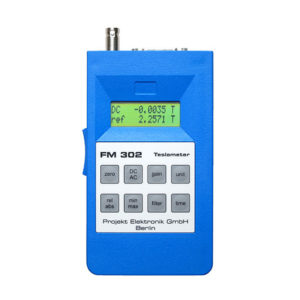

We can also manufacture other variants of temperature-resistant probes as a custom order.
Measurement of the Earth's Magnetic Field
Our earth is a gigantic magnet, with a north pole and a south pole, surrounded by a magnetic field like a permanent magnet.
The earth’s magnetic field has different strengths across the entire earth’s surface.
It is deflected or shielded by the magnetically conductive metals contained in the earth’s crust, such as nickel, iron and cobalt. The magnetic field is strongest at the poles.
In Germany, the strength of the earth’s magnetic field is currently around 49 µT. A correspondingly sensitive magnetic field probe is therefore necessary for the measurement.
In Germany, the angle between the earth’s surface and the earth’s magnetic field (angle of inclination) is currently around 65 °.
Inhomogeneity is the local disturbance of the otherwise homogeneous earth’s magnetic field. The cause of this may have a natural origin. This can be, for example, geological faults, magnetic materials or caves. But also buildings made of reinforced concrete and objects with parts made of iron or steel lead to a distortion of the earth’s magnetic field. The changes generated are typically in the range of -50 % to +100 % of the undisturbed earth’s magnetic field value.
In the case of uniaxial magnetic field probes, the angle (in the picture: Phi) between the probe and the field alignment must be taken into account, since fields can only be detected parallel to their respective measuring direction.
It is easier to measure the earth’s magnetic field with a 3-axis probe. With this type of probe, the measurement is independent of the angle between the magnetic field and the axis of the probe.
Application Note
For more information on the Earth’s Magnetic Field see our Application Note PE008 Earth’s Magnetic Field
Device Recommendation
From our range of magnetic field measuring devices, the Teslameter FM 302 is suitable with the uniaxial magnetic field probe AS-UAP GEO-X or AS-UAP Lot or the triaxial magnetic field probe AS-U3D GEO-X x+y+z syn-out.
The AS-UAP GEO-X probe is suitable for general measuring tasks, while the AS-UAP Lot probe is particularly suitable for measuring the vertical component of the earth’s magnetic field thanks to its special plumb shape with a weighted tip.
The AS-U3D GEO-X x+y+z syn-out is a 3-axis probe. With it, the earth’s magnetic field can be measured independently of the orientation of the probe. The probes are specially designed for measuring very small fields such as the earth’s magnetic field. The measuring range of the probes is ±200 µT.
The AS-UAP GEO-X or AS-UAP Lot offer the possibility of compensating for the influence of the earth’s magnetic field. In the smallest measuring range (Teslameter FM 302 in x100), a resolution of one nanotesla (0.001 µT) or less is achieved.
Measurement of Personal Protection Limit Values of Magnetic Fields
Established Limits for Magnetic Fields
Numerous laws, standards and regulations set limit values for magnetic fields. These specifications serve to protect people in general, employees at work and the wearers of passive or active implants. Passive implants include endoprostheses (artificial hip, knee and shoulder joints), stabilizers for blood vessels (“stents”) or heart valves. Active implants include cardiac pacemakers and defibrillators.
Sources of personal protection limit values for magnetic fields are e.g.
- Twenty-sixth ordinance for the implementation of the Federal Immission Control Act (Ordinance on Electromagnetic Fields – 26. BImSchV )
- German Statutory Accident Insurance (DGUV) Regulation 15 Electromagnetic fields or Rule 103-013 Electromagnetic Fields (formerly trade association rules for safety and health at work BGR B11)
- Recommendation of the [European Union] Council of 12 July 1999 on limiting public exposure to electromagnetic fields (0 Hz – 300 GHz) 1999/519/EG
- Directive 2013/35/EU of the European Parliament and of the Council of June 26, 2013 on the minimum health and safety requirements regarding the exposure of workers to the risks arising from physical agents (electromagnetic fields)
- Ordinance on the Protection of Employees from Hazards from Electromagnetic Fields (EMFV )
- Limit values for cardiac pacemakers and other devices implanted in the body (in part contained in the sources mentioned above)
- Building biology considerations
Requirements for Measuring Devices for the Limit Values of Magnetic Fields
The limit values cover a wide frequency range. In particular, there are also specifications for static magnetic fields (constant fields).
Many limit measurement devices use coils to measure the magnetic field. Due to the principle, such devices cannot measure static magnetic fields but only alternating fields. In the case of static magnetic fields, other measuring principles are required. Magnetic field measuring devices based on Hall sensors are usually used for stronger fields. Devices with fluxgate sensors are suitable for weak fields.
Most magnetic field probes are uniaxial probes. This means that they can only detect fields parallel to their respective measuring direction. If the probe is positioned at an angle to the field, the displayed value will be lower than the actual field. The probe must therefore always be aligned for maximum reading.
It is easier to measure the magnetic field with a 3-axis probe. With this type of probe, the measurement is independent of the angle between the magnetic field and the axis of the probe.
Device Recommendation
The Teslameter FM 302 with the appropriate magnetic field probes is suitable from our range of magnetic field measuring devices. All of our probes can measure both static magnetic fields (constant fields) and alternating fields.
The single-axis magnetic field probe AS-LTM or AS-LAP or the three-axis magnetic field probe AS-L3DM x+y+z syn-out are suitable for fields >200 µT. Due to the brass profile, the transversal AS-LTM is more robust than the axial AS-LAP. Therefore we recommend the AS-LTM for daily use. With the Teslameter FM 302 in x100, the measuring range for the mentioned probes is ±2 mT. This allows even small fields to be resolved well.
In the case of very weak fields <200 µT, the single-axis magnetic field probe AS-UAP GEO-X or the three-axis magnetic field probe AS-U3D GEO-X x+y+z syn-out are ideal. The probes are specially designed for measuring very small fields such as the earth’s magnetic field. The measuring range of the probes is ±200 µT.





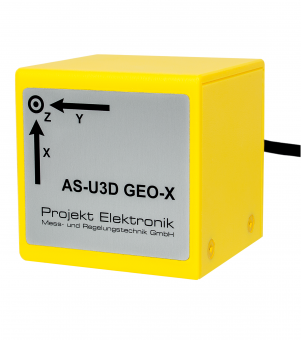
Measurement of the Flux Density of Superconductors and Pulse Magnetizers
Measurement of very strong Magnetic Fields
Fields in the double-digit Tesla range can be generated permanently with superconductors.
High fields are also generated in the medical field, e.g. as the main field of an MRT.
Depending on the system, pulse magnetizers also generate magnetic fields in the range from 5 T to over 10 T.
There are several hazards to consider when dealing with high fields. This may result in far-reaching stray fields, which pose a possible health hazard. But the resulting force on other objects, such as tools, is also important. In measuring devices, the batteries often generate a very strong force.
The function of measuring devices can be impaired by the effects of magnetic fields.
Device Recommendation
From our range of magnetic field measuring devices, the Teslameter FM 302 with the magnetic field probe AS-HAP is suitable.
The measuring range of the AS-HAP probe is ±20 T (calibrated up to 12 T). The probe has a bandwidth of 35 kHz, so that impulse fields can also be measured.
If the Teslameter FM 302 and not just the probe is exposed to a magnetic field, it works trouble-free up to at least 350 mT. However, the forces that occur must be taken into account.
We can also manufacture other variants of high-field probes as a customer-specific production. The most important thing to clarify is the possibility of calibration.
Testing the Magnetization of Weights
Weights for use with scales are made of different materials. In particular, weights of cast iron or steel may be magnetized by an external magnetic field.
For the maximum magnetization of weights, e.g. in the International Recommendation OIML R 111-1 and the standards based thereon DIN 8127 limits.
To measure the magnetization, our Teslameter FM 302 with the axial active probe AS-LAP is suitable. Instrument and probe are calibrated with traceability to the national standards of the Physikalisch-Technische Bundesanstalt.
Application Note
For more information on the Testing the Magnetization of Weights see our Application Note PE021
Device Recommendation
From our range of magnetic field measuring devices, the Teslameter FM 302 is suitable with the uniaxial magnetic field probe AS-LAP.
Our handle with a 2.5 mm protective plate made of aluminum ensures more comfortable use of our axial AS active probes AS-LAP.
Teslameter or Gaußmeter / Gaussmeter?
Devices for measuring the magnetic field are generally referred to as magnetometers.
The unit of magnetic flux density in the SI system is the tesla. Therefore, a magnetic field measuring device is often referred to as a teslameter. The unit was named after Nikola Tesla .
In contrast to Europe, the Gauss or Gauss is used as the unit of magnetic flux density in America (especially the USA). The naming took place here after Carl Friedrich Gauß . There, measuring devices for measuring the magnetic field are accordingly referred to as Gaussmeters or Gaussmeters.
Other ways of naming magnetometers derive from the measurement method used. Examples of this are e.g. NMR magnetometers or fluxgate magnetometers.
Units of Magnetic Flux Density and Field Strength Tesla, Gauss or A/m, A/cm, Oersted
Both the magnetic flux density (formula symbol B) and the magnetic field strength (formula symbol H) can be used to indicate the “strength” of the magnetic field.
Flux density and field strength can be converted into one another using the formula B = µ * H.
Both Tesla and Gauss are used as a unit for magnetic flux density.
The magnetic field strength, on the other hand, is given in A/m (ampere per meter), A/cm (ampere per centimetre) or oersted.
With both the Teslameter FM 302 and the Teslameter FM 3002, the unit in which the measured value is displayed can be switched using the “unit” button.
For more details on the conversion, see our Application Note PE005 Magnetic Units of Measure and Their Conversion.
If You have any Questions, we will be glad to Advise You

Do you have any questions, do you need further information or are you missing a document?
Call us or send us an email.

